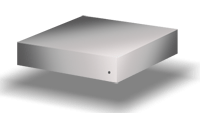May 20 2009
Compensating for mechanical tolerances, piezoelectric actuators are used to fine tune position of mirrors in e.g. interferometers. The solution is compact, there is no EMI, it operates at low voltage and you gain sub-nanometer resolution.

Interferometry is the technique of diagnosing the properties of two or more lasers or waves by studying the pattern of interference created by their superposition. The instrument which is used to interfere the waves together is called an interferometer.
Saving time by scanning liquids
Fine tuning of mirrors in interferometry is an important investigative technique in the fields of astronomy, fiber optics, engineering metrology, optical metrology, oceanography, seismology, quantum mechanics, plasma physics, and remote sensing.
One example is interferometers for studying liquid contents. These interferometers have the unique ability to measure liquids without the need for time-consuming sample preparation.
The liquid is simply scanned as it is and the result presented in seconds. The fast analysis directly at the bottling line avoids stacking up thousands of bottles while waiting for the laboratory reply.
Linear mode actuators
For interferometers, linear mode piezo actuators are most commonly used.
Linear mode actuators utilize the expansion or contraction parallel or perpendicular to the direction of polarization of the material. The available deformation, maximum 0.2%, is proportional to the length of the actuator and the blocked force is proportional to the cross section area of the actuator, typically 40MPa.
For more information on piezoelectic actuators, contact Noliac.